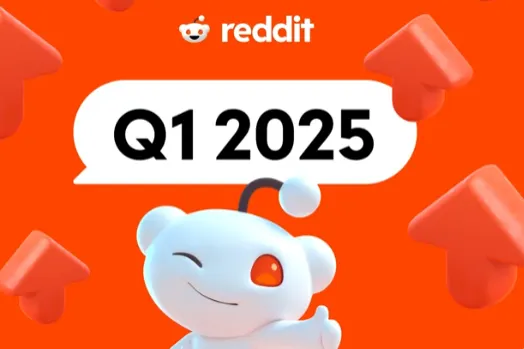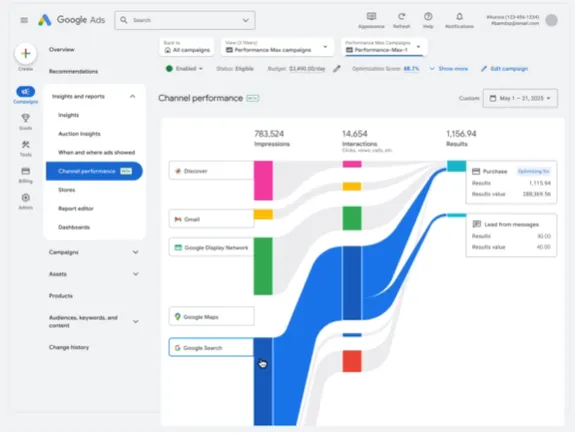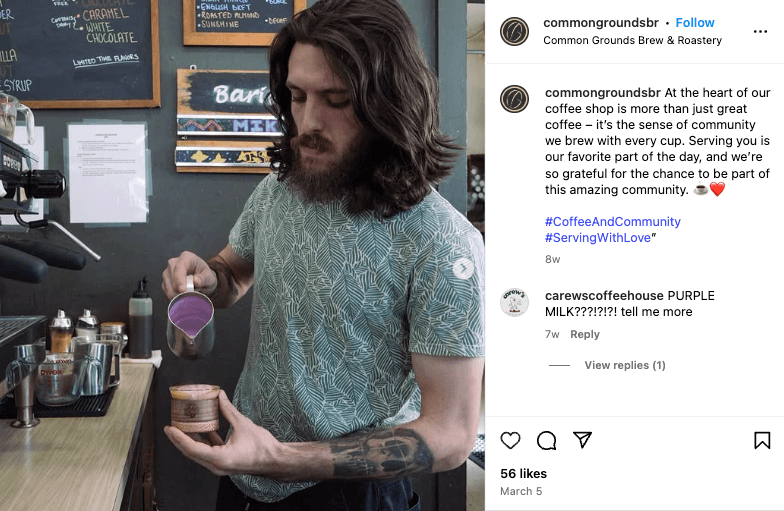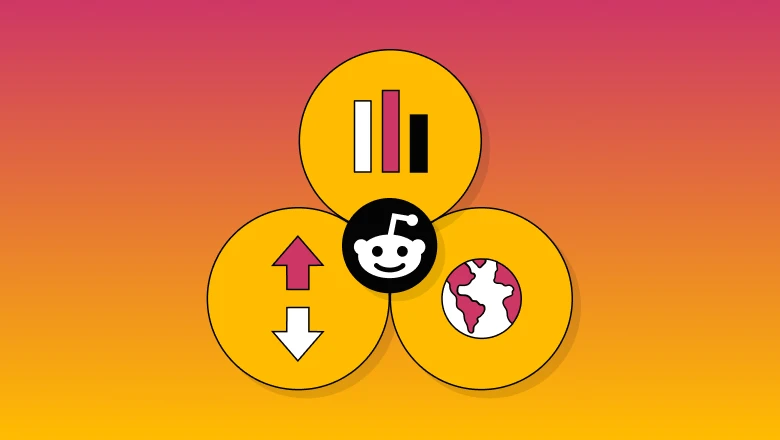User-generated content (UGC): what it is and why it matters for your brand
Imagine scrolling through Instagram, catching up with your favorite brands, micro-influencers, family and friends. Then you see a photo of a friend showing off Read more... The post User-generated content (UGC): what it is and why it matters for your brand appeared first on Sprout Social.
Imagine scrolling through Instagram, catching up with your favorite brands, micro-influencers, family and friends. Then you see a photo of a friend showing off their latest sneakers. You quickly look the brand up because if they look good on your friend, why not on you?
That’s user-generated content (UGC)—an authentic snapshot of genuine brand love that has become the heartbeat of social media.
UGC isn’t just a nice-to-have for your brand—it’s essential—especially when 66% of consumers talk to friends and family to keep up with trends. Consumers want unfiltered, organic and authentic insights from the people they know—whether that’s a friend or a creator they love. Let’s face it: We all trust a friend’s recommendation over a polished ad, especially in an AI-driven landscape where authenticity is vanishing and consumers crave community.
In this guide, we’ll dive into the fundamentals of UGC—the what, why and how—so you can use all types of social media content, like candid snapshots, rave reviews and spontaneous videos, to boost your brand’s relatability.
What is UGC?
UGC is unpaid or unsponsored content your customers create about your brand—think reviews, photos, videos and social posts. It’s genuine, authentic and priceless for credibility.
Sharing and resharing UGC multiplies a content asset’s reach and attracts more eyes to your brand. For example, Biteable’s Growth Marketing Manager, Haily Moulton (@hailymoulton), created a reel answering people’s burning questions about using AI as a social media manager:
Haily is also a Sprout Ambassador and swears by our all-in-one social media tool. By reposting her Reel, Haily gets new eyes on her video—and we get valuable content.
Your team can identify and measure UGC interactions using social media analytics and reporting features through platforms like Sprout Social. Find out how to use Sprout for social listening so you can capture and share these moments, too.
Types of UGC
UGC comes in all shapes and sizes, including:
Below is a detailed breakdown of each UGC type:
Customer reviews and testimonials
Users show their love for your brand through posts and stories.
Project management tool Trello, for example, reposted this X (formerly known as Twitter) post from Tony Lango, the world’s first engagement relationship manager:
Posts like Tony’s are personal endorsements on platforms like Instagram and X. Content like this from an expert people trust generates positive buzz and attracts lots of attention to your brand.
Photos
Customers’ photos of your brand or products build credibility and social proof. They also attract potential customers who want to see your product in action.
Gymshark’s Instagram feed, for example, is packed with fitness influencers posting high-quality photos of themselves wearing the brand’s activewear:
A steady stream of UGC showcases the product in use and demonstrates influencers’ loyalty and trust in the brand.
Videos
When your audience posts videos featuring your product, it’s like digital word-of-mouth. Benefit, for example, reposted this TikTok from makeup artist Colleen (@colleen.makeupp):
This timely Halloween makeup post using Benefit’s products is an excellent example of UGC that showcases a brand’s products in action. It also highlights its customers’ creativity and talent, making it relatable and aspirational for potential customers.
Blogs
Sometimes, customers write detailed experiences or stories about your products on their blogs.
Hostinger, for example, featured Grammarly as the best grammar assistant in a roundup article:
Grammarly can reshare this blog, feature a snippet from the review or collaborate with the blogger on future content. Collaboration can build a positive relationship and introduce Grammarly to new audiences.
Comments
Comments are a treasure trove of opinions and insights. Glassdoor created this Facebook post from existing responses in its Interview Tips Bowl, a social media series featuring interview tips from its audience:
Comments offer two key benefits that drive growth: They’re proof that other users actively engage with your brand and provide valuable audience insights.
Why is UGC important for brands?
UGC turns your customers into your biggest fans and your most authentic spokespeople. Here’s how it impacts your brand:
Provides a consistent source of inspiration
Struggling with content ideas? You’re not alone.
The average brand aims to publish 10 social posts per day, according to the 2024 Content Benchmarks Report. Luckily, UGC is a goldmine for inspiration, packed with customer posts, reviews and stories.
Here’s why a rich content bank is important: The Index™ found that consumers believe the bedrock of standout social media content is the quality of a brand’s product or services.

Repurposing UGC content is a great way to authentically showcase the quality of your products and services without being salesy. Plus, UGC is original. The same research shows that consumers also believe original content—not trending topics—makes brands stand out on social media.
A consistent social presence keeps your brand top-of-mind. Each customer interaction is a potential post that keeps your feed active and your audience engaged.
Adds social proof and drives purchase intent
User-generated content turns customers into your most credible salespeople—every photo, review or testimonial is an authentic endorsement. Why does that matter? People trust people.
When they see others—real users, not actors—enjoying your product, it’s as good as a recommendation from someone they know. Social proof taps into the “follow the herd” instinct people have. If everyone’s buying this, it must be good, right? This validation makes potential customers feel more comfortable and confident in choosing you. They need reassurance to make the leap from interested to invested.
Now, consider this: The Content Benchmarks Report also shows that more than one-third (37%) of consumers think the most memorable brands prioritize direct audience engagement over publishing. That means customers want to engage and become part of your story. By commenting on and reposting UGC, you build personal connections and a community with your audience, making your brand more believable.
Generates brand awareness
UGC puts your brand on the radars of new audiences. Every share, tag and mention extends your reach and spreads your brand’s message.
Brand awareness is the first step in the marketing funnel. Familiarity breeds trust—when people recognize your brand, they’re more likely to consider you when they’re ready to buy.
Each user’s content is a personal shout-out to your brand, and their followers are all ears. It’s a network effect—every post introduces your brand to a new audience. And because it’s coming from someone they trust, it makes a lasting impression.
Creates authenticity
UGC puts your brand on the map in a way that feels organic, not intrusive. Tapping into real-time content from real people provides the authenticity consumers desire. And as long as you get a user’s permission, brands can deepen their genuine connection with audiences by thoughtfully integrating UGC into paid social media ads.
According to the Index, consumers rank authenticity and relatability as the top two traits in brand content.
Brands have an opportunity to bridge this gap and curate content that resonates on a personal level and builds trust by focusing on these key traits.
When you showcase UGC, you’re doing more than adding content to your feed. You’re building a community around your brand. You’re telling your customers, “We see you, we hear you and we value what you have to say.” This recognition motivates them to engage more and contribute content.
Builds brand loyalty
In our Index, we found that 73% of social users will buy from a competitor if a brand doesn’t respond to them on social media.
When you actively showcase user content, you acknowledge and celebrate your customers. This validation makes people feel connected to your brand, like they’re a part of something.
Every piece of UGC is a chance to boost trust and build brand loyalty. Your most loyal customers are your biggest cheerleaders. Building a relationship with them and acknowledging their efforts encourages them to invest more in your brand—with money and UGC.
Contributes to your bottom line
UGC is another form of word-of-mouth marketing, and it’s one of the most potent ways to connect with your target audience and lead them to a purchase. According to the Index, 81% of customers will make several purchases a year because of social media. When you can measure and grow your UGC strategy, you’re more likely to grow your bottom line.
With Sprout, you can measure post impressions, engagements and even message click links. These insights help you track the performance of UGC reposts to understand what’s resonating with your audience and getting them to engage directly with you.
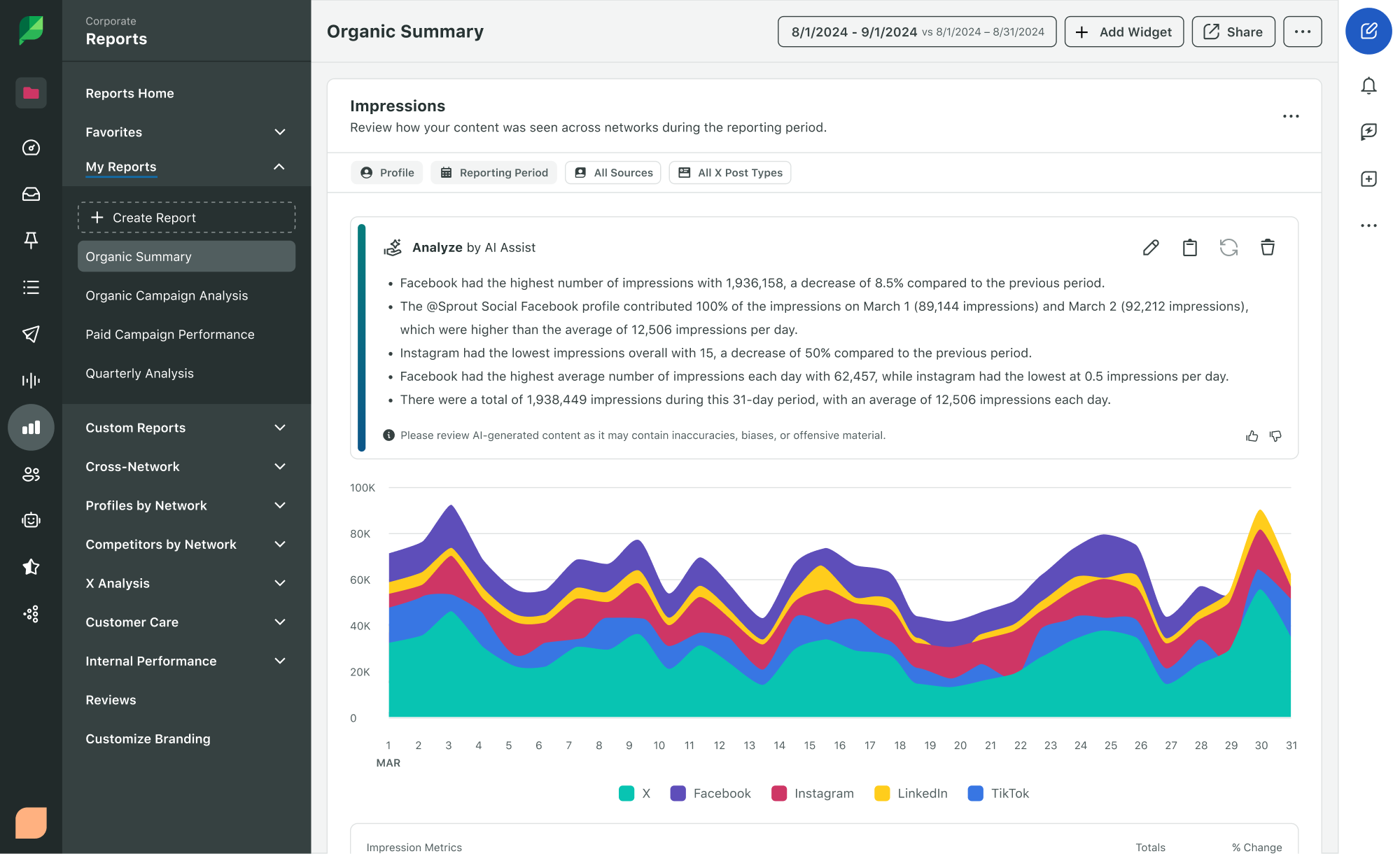
5 real UGC creation examples
These UGC examples show how brands can use customer content to drive engagement and authenticity to build brand loyalty:
1. Nutrisense sparks glucose experiments
Health and technology company Nutrisense provides personalized nutrition advice based on continuous glucose monitoring data. Users wear a device that tracks their blood glucose levels in real time, providing insights into how their body responds to different foods.
Nutrisense’s platform analyzes this data and pairs users with registered dietitians to optimize metabolic health, improve diet and support weight loss.
In July 2021, Nutrisense had about 25,000 followers across its social media profiles. The brand wanted to amplify its presence, so it started posting UGC and pairing it with Sprout’s insights.
Sprout’s reports highlighted the content that resonated with Nutrisense’s target audience. By the end of 2022, Nutrisense’s social media engagement had grown by 45%, and its community had grown to more than 130,000—a 496% increase.
2. Taylor Swift fans share tour outfits
Taylor Swift isn’t just a music superstar—she’s a master at making fans the heart of her brand. Her Instagram account, Taylor Nation, is part of her PR and marketing muscle and acts as her official fan club. It also pumps life into UGC campaigns that fans adore.
For the Eras Tour, Taylor Nation asked fans to post their tour outfits using #TSTheErasTour. Fans went all out, showcasing their Swift-inspired looks with glitter and friendship bracelets.
But Taylor Nation didn’t stop there—the account also reposted its favorite pictures. Fans got to be the stars in every city on the tour.
UGC is one tactic in a detailed customer marketing strategy, and it shows how Taylor and her team create a tight-knit community. Fans don’t just buy a ticket—they buy into a shared story and an immersive experience.
3. Starbucks Red Cup Day
Customers already post pictures of their trendy coffees, but what happens when a brand organizes a yearly event? The Starbucks Red Cup contest encourages users to post images of their holiday-themed cups after they purchase coffee.
The contest encourages customers to try new holiday drinks and is a great way to spark viral moments across different platforms.
The contest’s launch on an advertised day, like November 14, 2024, amplifies its impact. Users generate content through multiple platforms to spread the word and share their experiences as excitement builds up to this day. The image below shows how the “red cup” buzz spiked to the top of searches that day:
4. Wahl Professional taps into existing communities
Wahl Professional produces and sells professional grooming equipment, including hair clippers and trimmers. Professional barbers and stylists trust Wahl for its durable, reliable and precise tools.
Wahl has been around for nearly 100 years, so it needed a fresh strategy to target and appeal to new customers. Since June 2015, Wahl has pivoted its approach to active engagement, using Sprout to manage and monitor conversations across multiple Instagram accounts, particularly @wahlpro. This shift led to a curated strategy of sharing UGC content.
Wahl’s target audience—a vibrant community of stylists and barbers—was already sharing their work with the hashtags #Wahl and #WahlPro. Wahl monitored these brand keywords with Sprout and transformed its social feed into a showcase of professional talent and authentic user experiences.
In only a short time, @wahlpro boosted its Instagram engagement by 4,307%. The account’s followers increased by 84,788 with Sprout.
5. Papa Johns leverages user-generated content with social listening
What happens when a celebrity sparks user-generated content? Magic.
A spontaneous moment of NFL center Jason Kelce enjoying Papa Johns pizza during an Amazon documentary sparked organic social media buzz. The brand caught on to the emerging trend using Sprout for social listening.
Kelce’s mention sparked UGC—fan comments and posts—about the pizza, allowing Papa Johns to leverage the organic connection and collaborate with Kelce. Josh Martin, Director of Social Media and Brand Engagement at Papa Johns, said, “The insights gained through Sprout Social have empowered us to innovate our brand engagement approaches.”
UGC moments like these—combined with Papa Johns using Sprout to improve its response rate on social media channels—have increased customer satisfaction, loyalty and brand awareness across social networks.
How to find and curate UGC
Spotting the right content is an essential part of your UGC strategy, and finding the right content to invest in requires social listening. Below, we’ll explore how to identify promising UGC through social listening and the different methods to find content on each platform.
What makes good UGC?
Effective UGC should start with authentic, organic interactions. For example, when users share something unique about your product or service, you can dig deeper to determine whether there’s a connection within your brand’s community.
If the content you’ve found provides the authentic user reaction you need and your target audience connects with it, you can promote more of this kind of UGC through sharing, campaigns or partnerships.
The following characteristics sum up valuable UGC:
- Users naturally post about the topic.
- There’s traction within your community.
- Your brand can share the post or add value to the conversation.
Social listening helps you find, investigate and strategize based on these characteristics.
Learn how to apply social listening, as shown with these examples:
- Find new content opportunities and UGC campaign ideas: Discover what users and brands discuss within your industry.
- Identify trends in the industry: Figure out what’s buzzing in your market so you can replicate it for your customers and become a relevant brand on socials. For example, Common Grounds Brew & Roastery posted a picture featuring purple milk without explicitly mentioning it. A user quickly asks about it and learns that it’s cherry-infused milk.
- Promote products in relevant ways: Hop into your community’s conversations to find ways to add relevancy to your brand. A great example is when a TikTok user went viral vibing to Fleetwood Mac’s “Dreams” while chugging cranberry juice and skateboarding. Tons of users and brands engaged with the content—even Mick Fleetwood jumped in and earned 2.7 million likes.
You can automate the social listening process so you don’t miss a beat. With Sprout’s listening capabilities, you can access audience insights, trendspot and gauge sentiment to find out what your target audience is talking about.

Finding UGC content with Sprout
Using Instagram as an example, here are strategies for discovering relevant content from users:
1. Create a Topic to inform your query
Start building out your Listening query by choosing a topic title, description and the type of query you need.
Topics are driven by queries you set up to listen to conversations on social media that are relevant to the subject of your Topic.
For example, let’s imagine we want to set up social listening for Sprout Coffee Co. to find out what people are saying about holiday drinks.
2. Choose the platform you want for UGC
Pick the platforms and sources most relevant to the UGC interactions and digital marketing campaigns you want to create. In this example, we’ll pick Instagram.
With Sprout’s Query Builder, you can enter a hashtag your target audience is talking about, based on current trends and needs—no boolean required.
3. Search key phrases for UGC
Next, you can add a proximity match, a hashtag and other inputs to hone in on your needs. You can spot relevant user-generated content by using keywords and grouping.
You can add multiple words and variations to refine your search on different pieces of content and trends. You can organize results and categories through groupings as you work on these queries.
Since every platform is different, users may experience different parameters for Listening. For example, you need to use hashtags for your queries on Instagram.
4. Listen to your people
Once you search for topics, the Conversation section of your Topic Insights reveals details about your keywords and hashtags.
Sprout uses published messages from your audience to create a Word Cloud that gives you more insight into what your audience cares about. You’ll learn all about the people, places and things discussed within your chosen Topic.
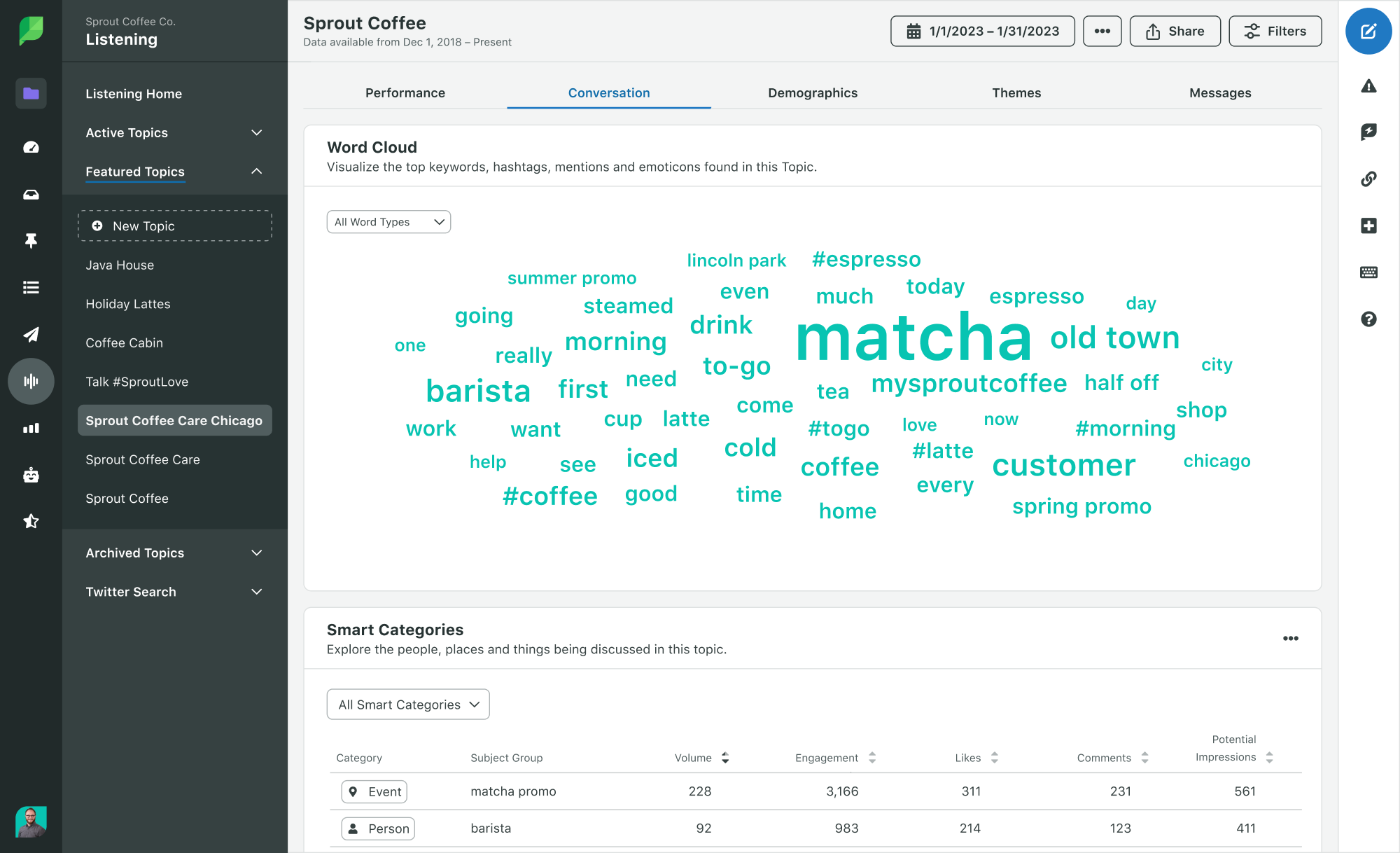
Use this information to update and refine your queries. Then, you can use Smart Categories, a natural language processing (NLP) model, to identify top people, places and things with a topic.
You can find specific messages to see what your audience is saying by clicking on a keyword within the Smart Category.
For our coffee shop example, we would collect and analyze relevant keywords and audience messages to discover their interests in or adjacent to coffee or locations.
5. Engage with your audience
Now that you have a pulse on what your audience is talking about, use your search results to find relevant customers or target audience members.
You can engage with their posts, share content and inspire similar posts. Pairing your Listening insights with Sprout’s Smart Inbox to track mentions and tags makes it easy to proactively interact with your customers.
On Instagram, for example, you can leverage insights like:
- Recognize tagged photos: See who’s tagging your brand with the Smart Inbox. It’s a great way to find pictures of customers interacting with your product or experiencing your service. When users tag you, you can easily find and repost the story through Smart Inbox, sharing UGC instantly and encouraging others to post.
- Track contests: With Listening, track relevant hashtags associated with a contest to gauge the reach and engagement of their campaigns and identify user-generated content. This also enables brands to measure campaign success by analyzing the volume of mentions and the sentiment of the conversations around the contest hashtag.
- Learn about your audience: With Listening, you can discover trends within your target audience’s interests and jump in by interacting with their Stories.
In the example below, 100 Montaditos, a restaurant based in Spain, discovered and reposted a user’s picture of her afternoon tapas:

6. Build a community
Your Instagram UGC strategy shouldn’t stop after you uncover the content. Develop a process to build relationships, recruit brand ambassadors and foster a community.
The conversations can start in the comments and DMs, but the next critical step is to create a community that unites the fan base that loves to post about your brand.
Best practices for sharing UGC
Adding UGC is about more than hitting the reshare button every now and then. It’s about listening to what your customers are sharing and seamlessly weaving it into your brand’s narrative.
Here are some tips to help you make UGC a cornerstone of your content strategy:
1. Encourage your audience to share UGC
Inspiring users to post content about your brand, product or service starts with encouragement and community building. Consider different strategies to drive user-generated content, including:
- Launch contests and challenges: Host a contest asking users to post photos, experiences and other types of content to win prizes. Then, share the content with your audience to prompt more posts.
- Start a conversation: Publish a post that asks for user input, whether it’s a post on X or an ask-me-anything (AMA) on Reddit. You can share these ideas and comments as reposts, screenshots or other compelling content formats.
- Establish a UGC hashtag: Create and promote a branded hashtag that users add to their posts, encouraging others to do the same. Hashtags also make it easy to find brand-specific UGC. One example is Apple’s 2015 #ShotOniPhone campaign, which users continue to use on Instagram and other networks today.
- Create an experience worth sharing: Add a fun sign at your brick-and-mortar location or create a funny email response when users buy your product to create shareable experiences. Add a unique touch that encourages users to post.
When you use Sprout, you can easily track your campaign performance and social media marketing. With Sprout’s Smart Inbox, you can track UGC hashtags and replies to key conversations. It helps you unify all your social channels to monitor and respond to your messages in one place.
Campaign monitoring also enables you to track key performance indicators, and understand which types of UGC content your audience resonates with.
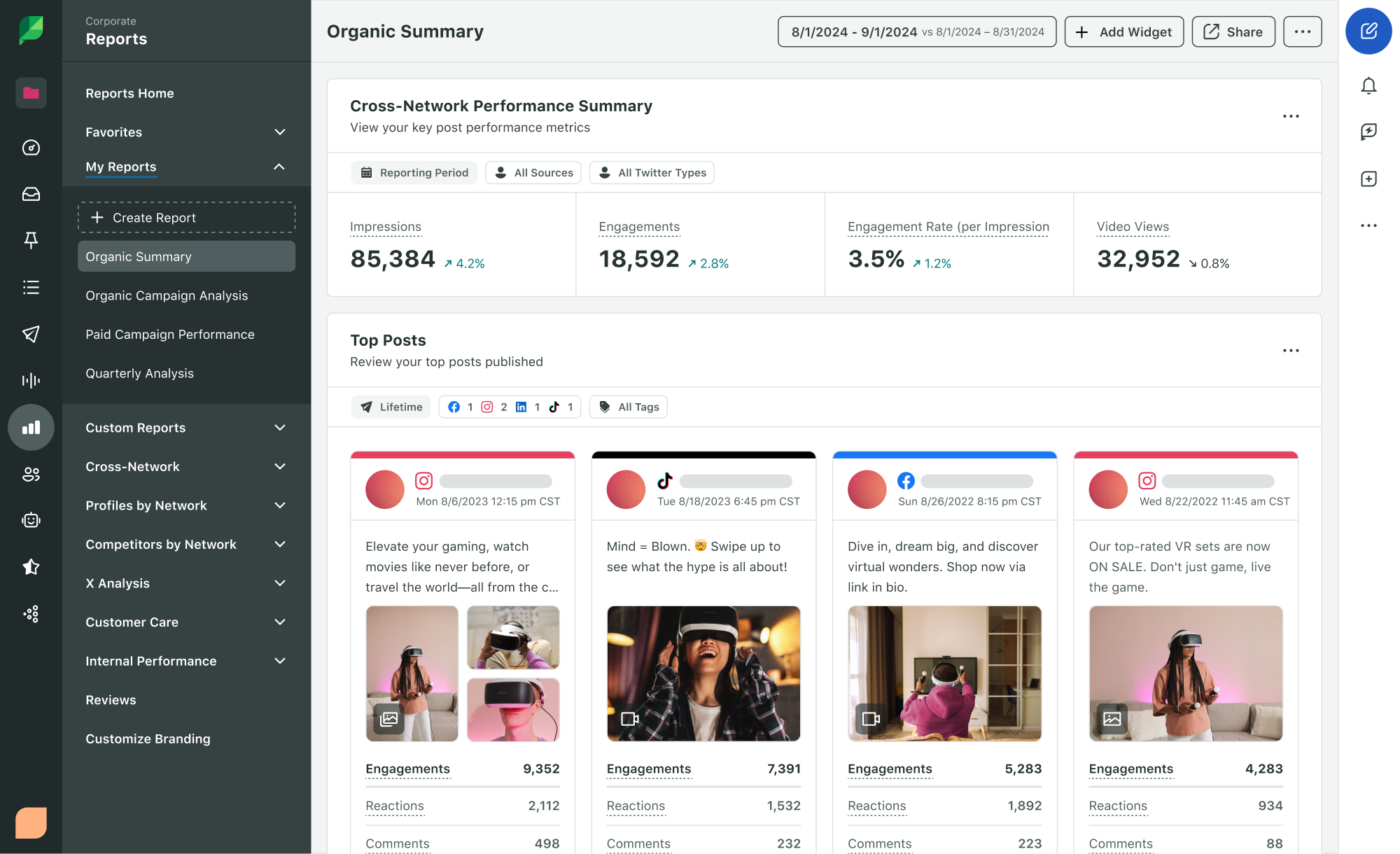
2. Find and repost UGC on relevant social networks
You need to know where your audience lives on social media and where potential influencers have the most influence. For example, Instagram is a natural fit for sharing visuals, but double-check that’s where your target audience wants to see those visuals.
To start, consider your audience and goals when choosing a social network. Strategically choose the right network and create an engaging social environment to deliver content and nurture long-term relationships.
Identify the top-performing UGC formats on each network and adapt their presentation based on each app’s culture. Use the following list to help guide you:
- Facebook: Use Facebook to share full video content and stories that boost engagement, especially within specific communities or locations.
- X: If you host events, consider creating a live X feed to capture and quickly reshare UGC in real time. This tactic is also an excellent opportunity to capitalize on hashtags.
- Instagram: Instagram is a favorite for showcasing products. Brands are free to get creative and connect with those who support their business. You can also easily repost on Instagram to show off customer UGC and use hashtags to build a community around your brand.
- TikTok: TikTok’s culture thrives on authentic, scrappy videos, not refined reviews or curated stories. You can engage with a customer in their comments and ask permission to share their content on your page.
- LinkedIn: Use LinkedIn to share UGC that aligns with your employer brand or, if you’re B2B, how your audience uses your product at work.
3. Always ask permission and credit content creators
You discover a user post that just nails it. But before you hit the share button, ask for permission. Before reposting, review the network’s content policy and any relevant local laws. This practice will ensure you stay compliant and signal your audience that you respect them.
Send a quick message—it can be as simple as, “Hey, we love your post! Can we feature it on our page? We’ll make sure to credit you!” Adding a simple “Photo by @username” or a tag in the caption (like skincare brand La Roche-Posay) is sometimes enough. Giving credit shows respect and keeps things transparent—plus, it helps build a sense of community.
When creators see you treating others well, that will nudge them to participate. Tagging the creator also introduces your brand to their audience, increasing awareness.
You can take the gratitude a step further, too. Relationship-building makes UGC a permanent part of your content strategy. A quick DM saying “Thanks!” can turn a one-time poster into a long-time brand ambassador.
4. Use employee advocacy to amplify UGC
Turn your team into brand ambassadors with employee advocacy. Encourage them to share UGC on their channels. When employees share UGC, it amplifies your reach and gives your brand a human face. A post from a person rather than a brand often gets more traction, feels more genuine and can spread like wildfire.
Start by creating a culture that shares celebrations. Offer guidelines to strike the balance of authenticity while staying aligned to the brand voice, create templates to give employees a head start and motivate them to post.
Pro tip: Make posting fun. Hold a monthly contest or highlight the top employee-shared UGC to make your team feel connected to the brand’s story.
Lastly, track your progress. Using employee advocacy tools, like Sprout’s, helps you recognize and distribute the content that resonates most, increase employee participation with curated content and increase social ROI.

An employee advocacy strategy that covers all the bases turns your team into a driver of authentic brand promotion.
5. Monitor UGC’s impact with a dedicated tool
If you want your UGC strategy to work, you have to measure. No matter what your goals are, benchmarking is a must.
Our latest Index points out that 81% of consumers attribute social media to the real-time purchases they make several times a year. This finding highlights the critical role of measuring, reporting and optimizing your UGC strategy for ongoing awareness and conversion.
With Sprout, you get social media analytics tools to track your overall engagement with UGC.

Whether you’re posting to Facebook, X, LinkedIn or Instagram, you can access detailed audience reports that reveal which content is driving the most engagement and growth on your profiles. You can also use our social listening tools to analyze your social data on the content and conversations happening around your brand.

Knowing what your brand is tagged in provides helpful insight into your brand’s UGC strategy. Sprout’s Tag Report pinpoints how well your UGC is doing compared to your other content. Use this data to optimize your overall social strategy so all your content resonates.
6. Check music copyright
When adding UGC to your content mix, you must account for copyright. It’s easy to get caught up in the visuals and forget that music needs clearance, too. If there’s any music in user-submitted videos, you must verify that it’s all above board and check that it’s licensed for commercial use.
Sometimes, it’s as straightforward as reaching out to the artist. Other times, you’ll have to swap the track with a royalty-free option. Bottom line: Compliance will keep your brand on the right side of copyright law.
How to measure your UGC strategy’s success
As you build your UGC strategy, you must measure your progress and results. Use Sprout’s Post Performance Report to track the following social media KPIs:
- Impression: Impressions tell you how many people see your post or profile.
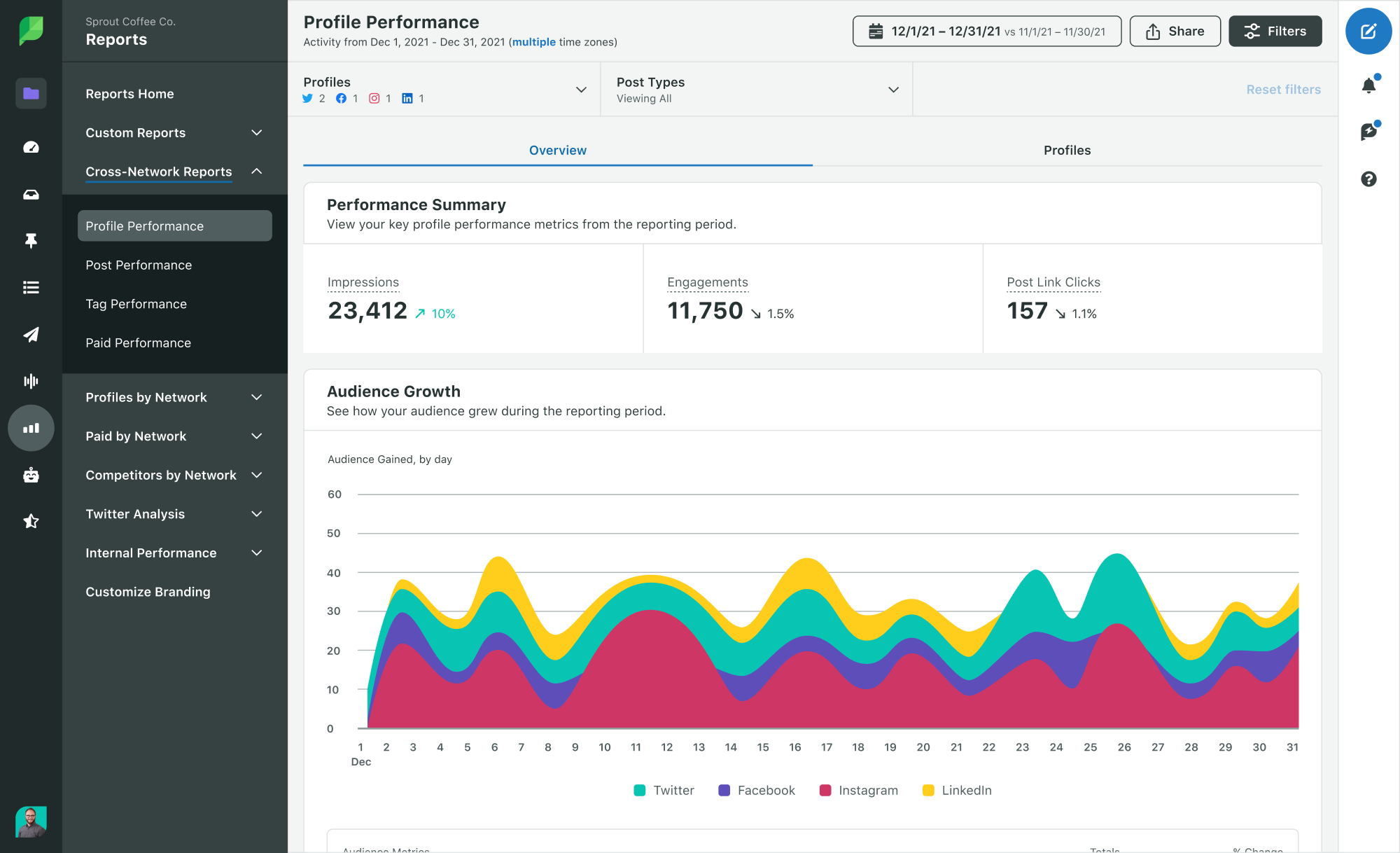
- Post reach: Reach shows how many unique accounts saw your post, measuring the overall exposure of your UGC shares earned.
- Share of voice: Measure your online visibility compared to your competitors. With it, you can measure the long-term impact of your social strategy.
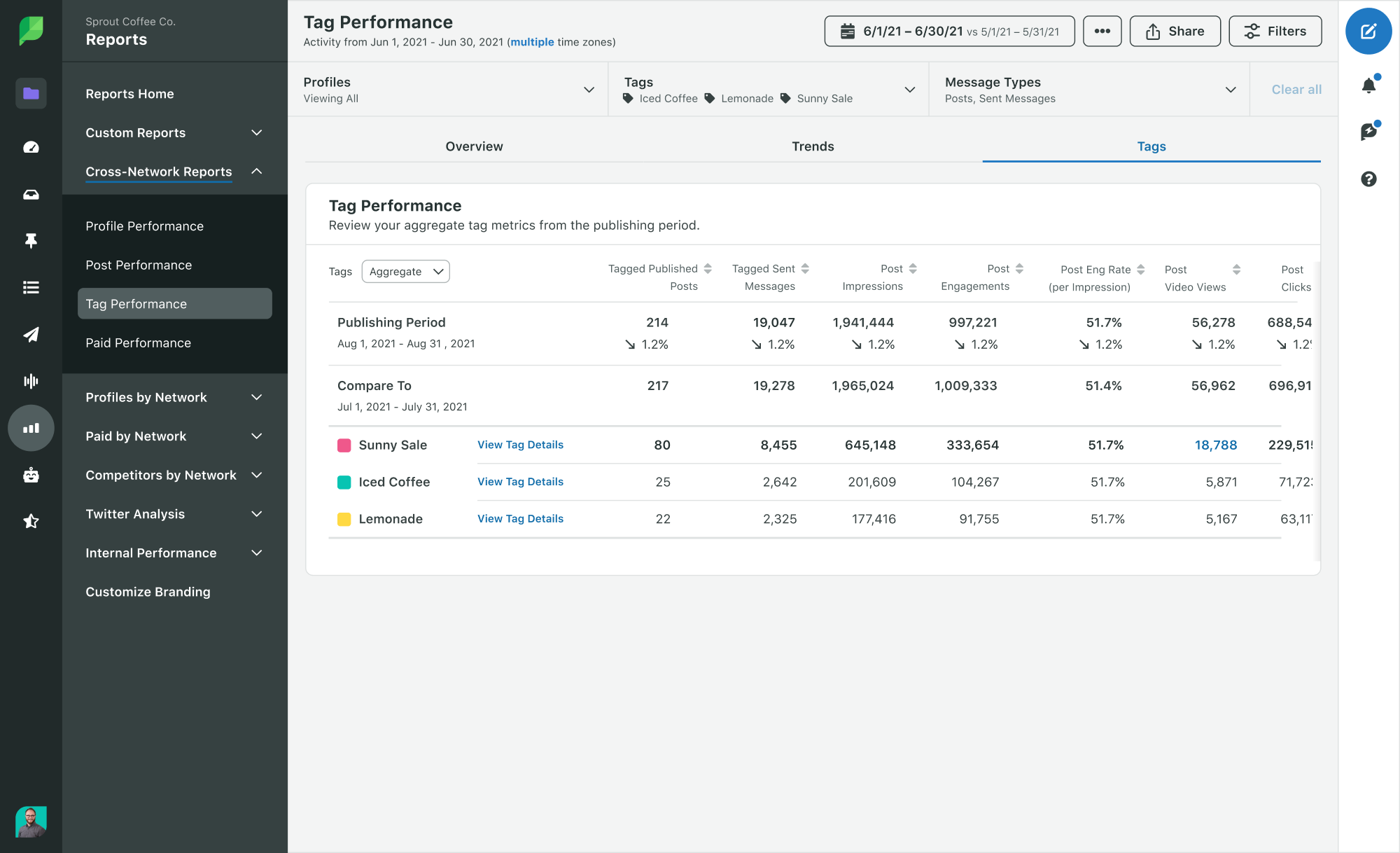
- Likes, shares and comments: These metrics help you calculate how well your UGC shares resonate with your audience. The more interactions you see, the stronger the signal that you hit a relevant topic for potential campaigns.
- Mentions: This metric sits at the heart of UGC. When users mention you in a post or comment, you get an authentic piece of ready-to-post content for your audience. Monitor your brand mentions for critical insights into the organic growth generated by your community-building and engagement strategies.
Add the power of UGC to your workflow with Sprout
UGC is the secret sauce that adds an authentic flavor to your brand’s social presence. But it isn’t just a one-off strategy—it’s a steady conversation. Keep asking for that content and keep crediting those creators to keep building and engaging your community.
Sprout helps you streamline monitoring the UGC that resonates with your audience, helping you track, curate and showcase the content that tells your brand’s story through your customers’ experiences.
Want to see how it fits into your workflow? Try a free trial of Sprout today to see how it can streamline and optimize your UGC strategy.
The post User-generated content (UGC): what it is and why it matters for your brand appeared first on Sprout Social.

















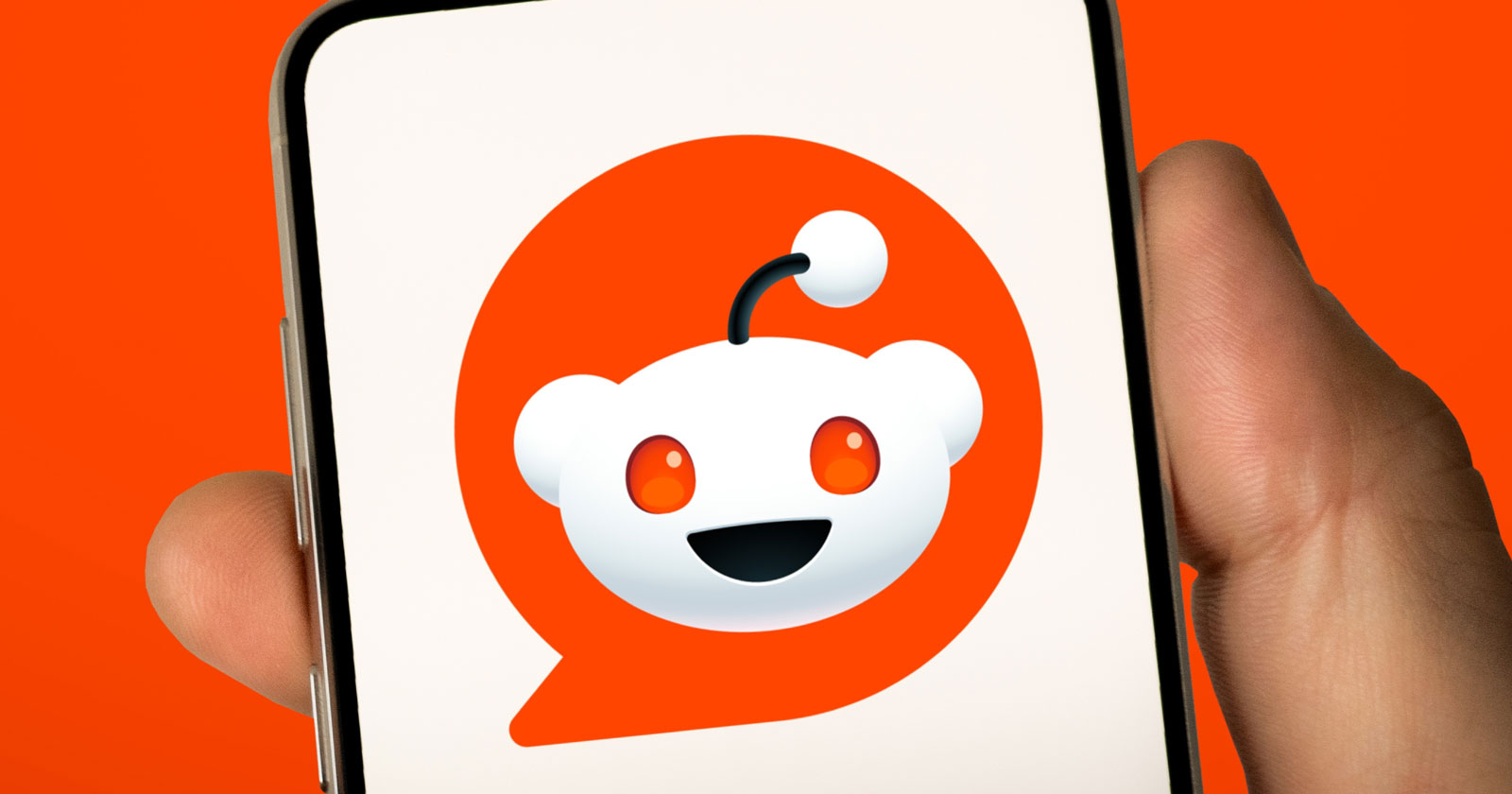











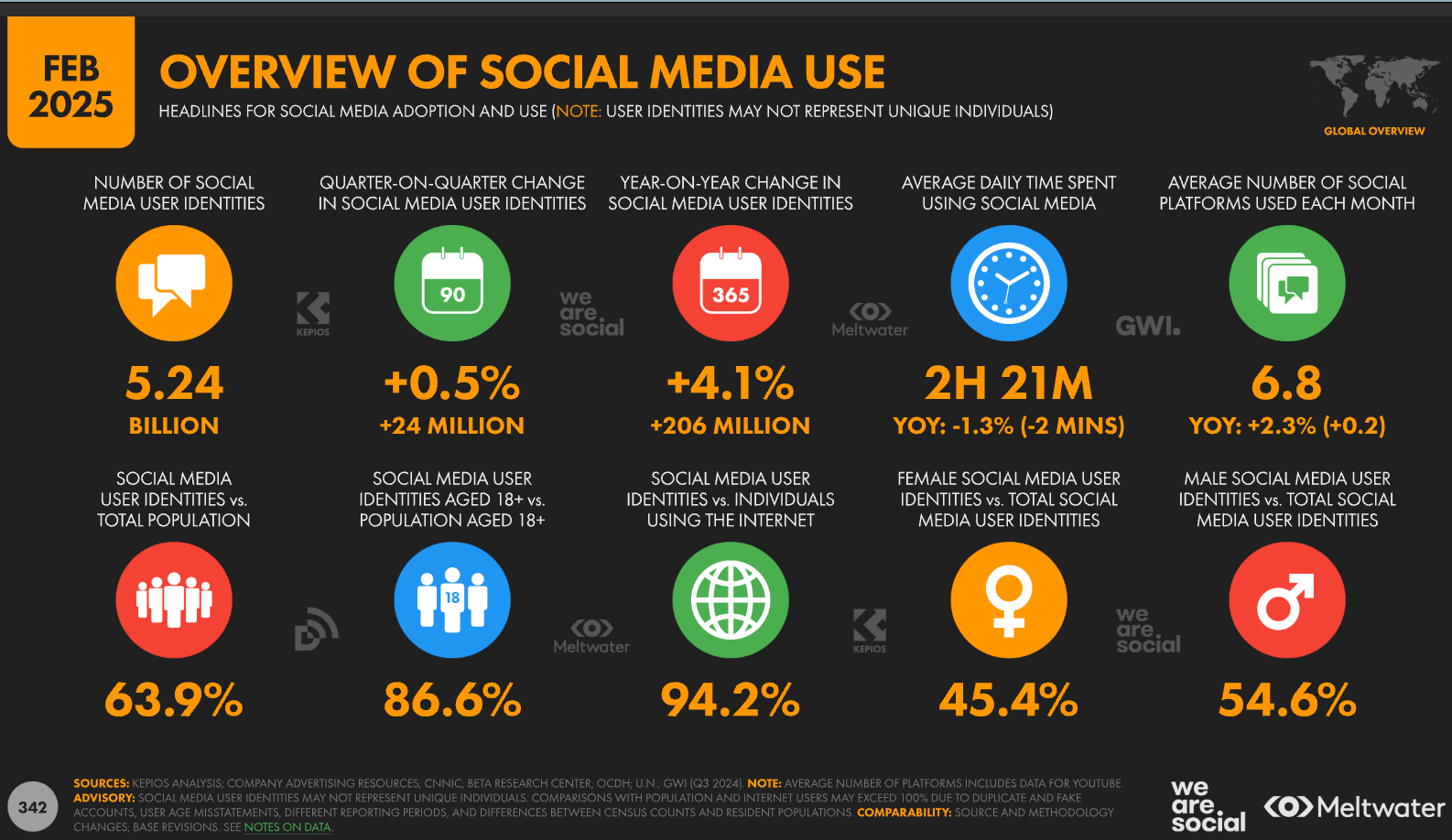
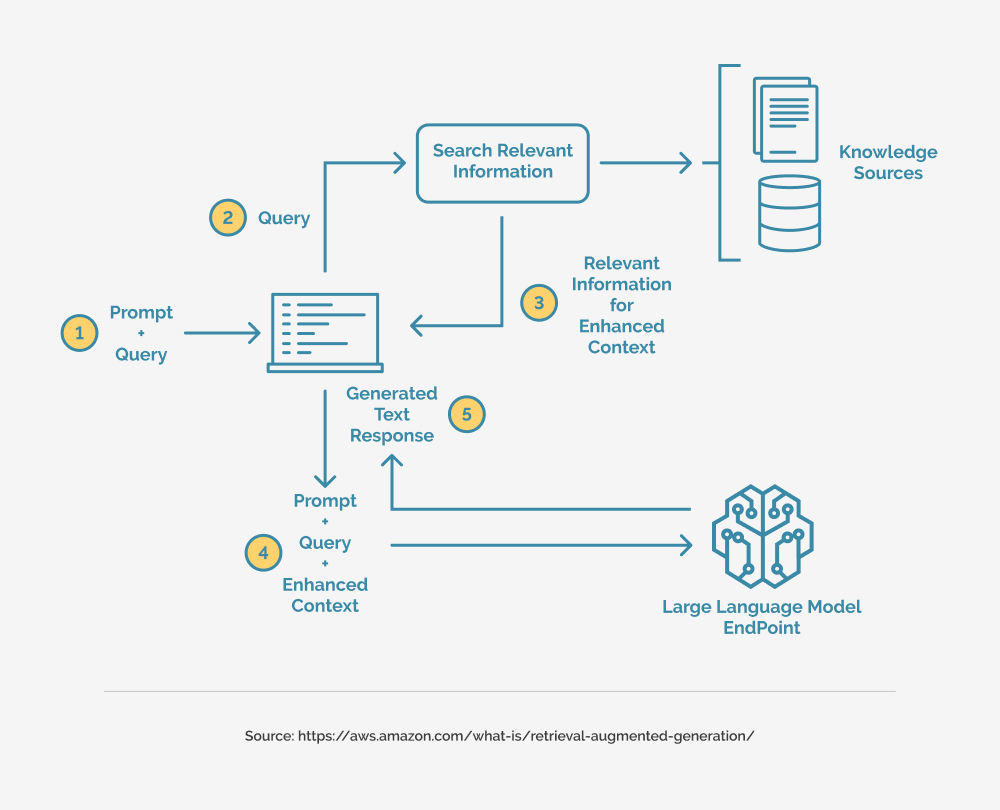
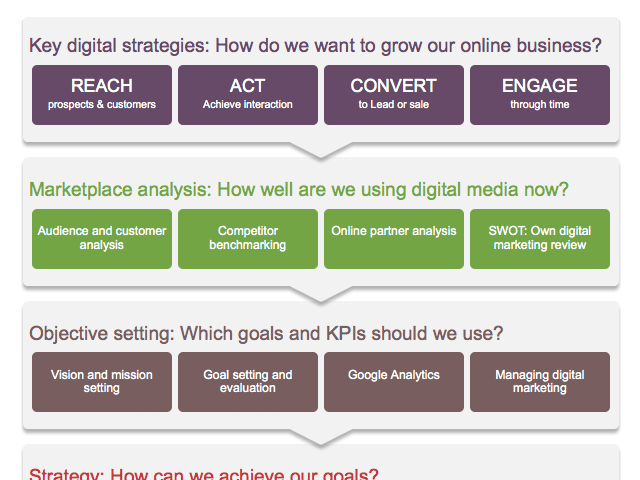













![The 11 Best Landing Page Builder Software Tools [2025]](https://www.growthmarketingpro.com/wp-content/uploads/2024/04/best-landing-page-software-hero-image-1024x618.png?#)
































![What Is Generative Engine Optimization [Tips & Workflows To Do It]](https://moz.com/images/blog/banners/What-Is-Generative-Engine-Optimization-Tips-Workflows-To-Do-It-1.png?auto=compress,format&fit=crop&dm=1745607929&s=6f75f1f02c531af0f80acb12517c8bab#)


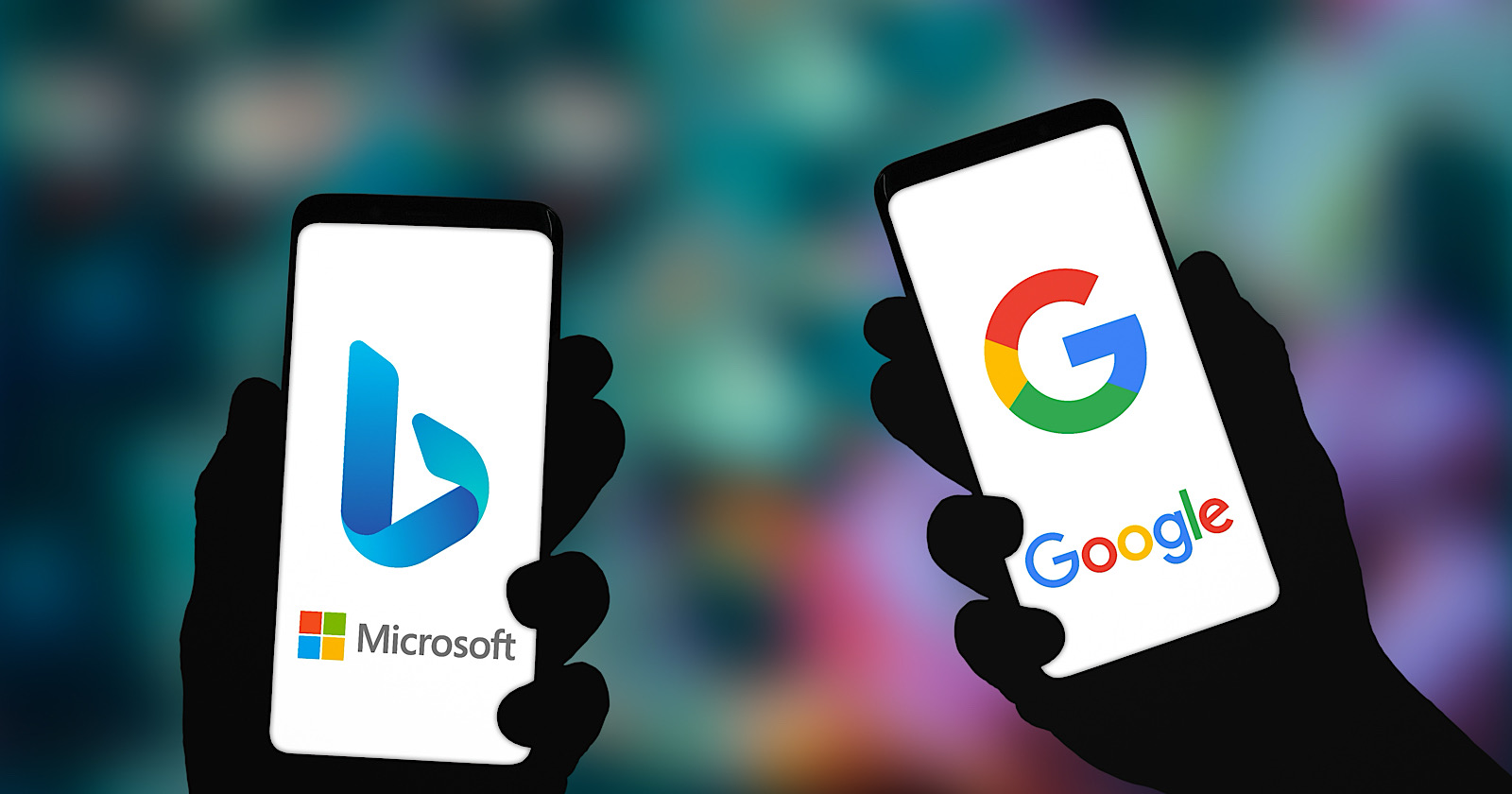
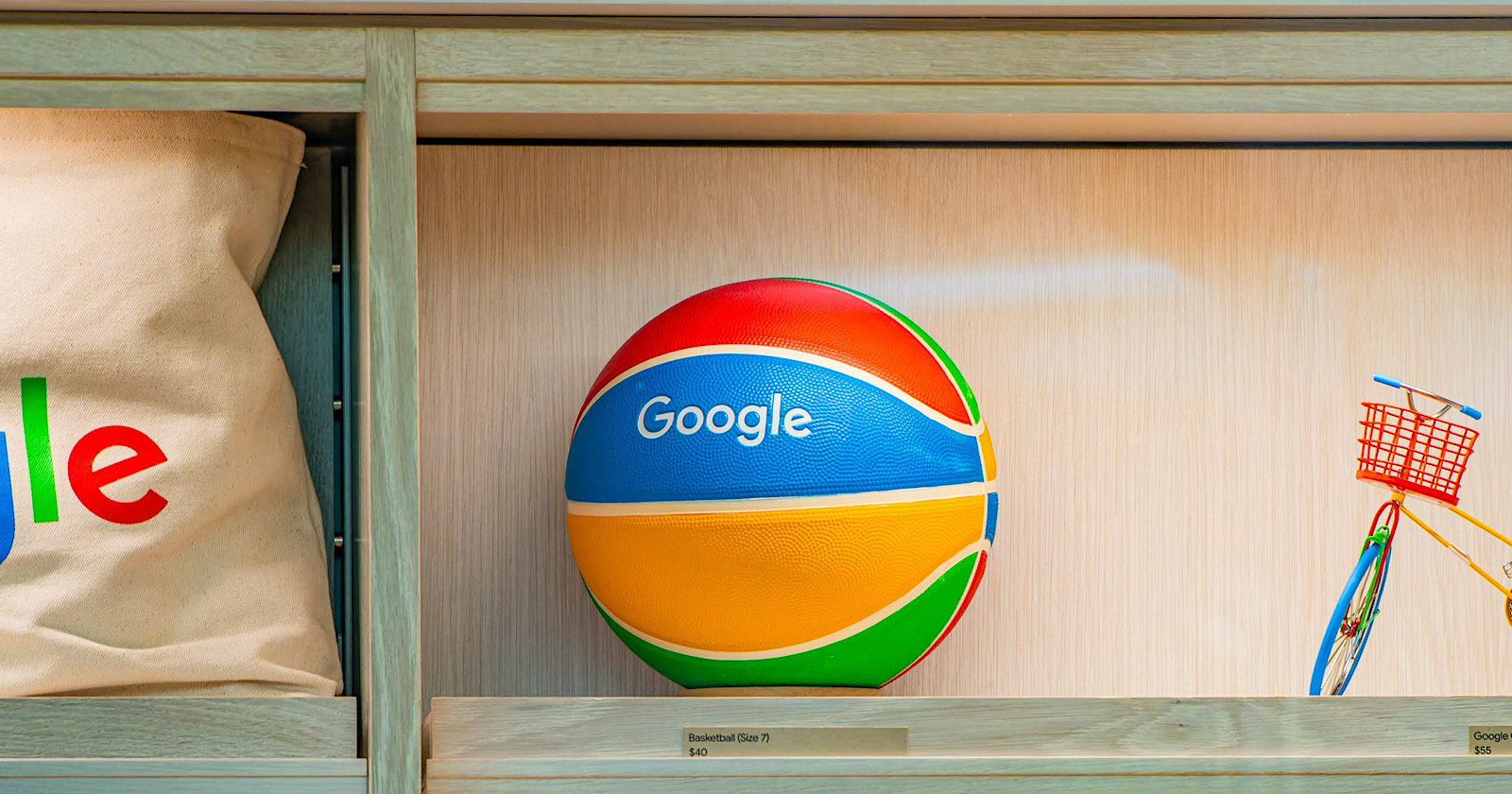







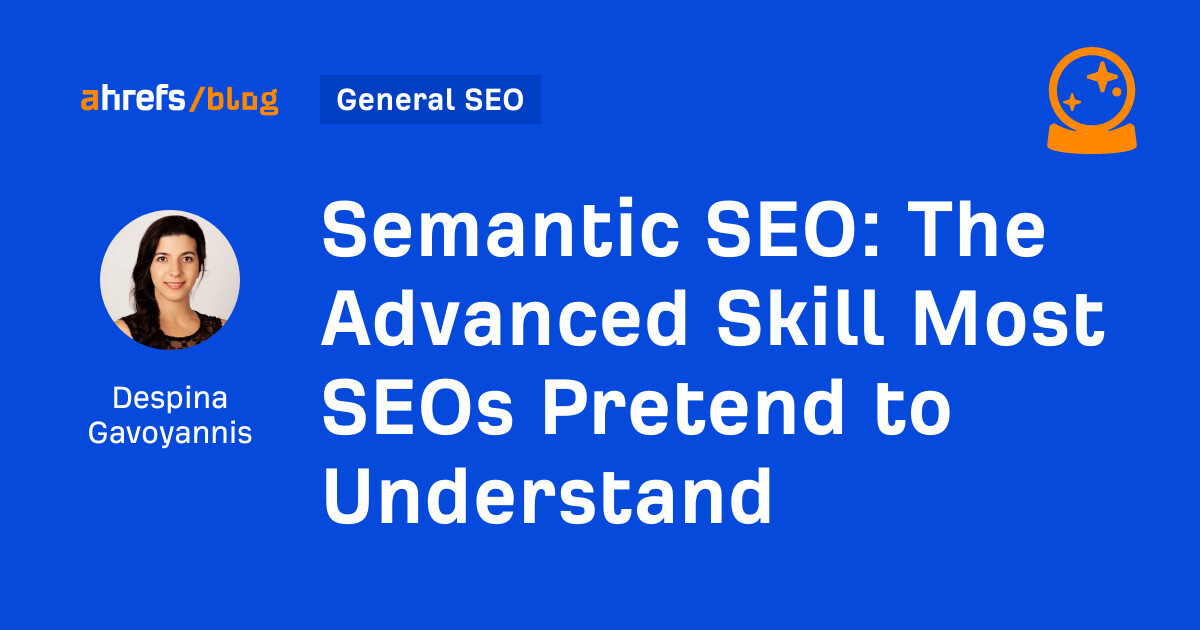
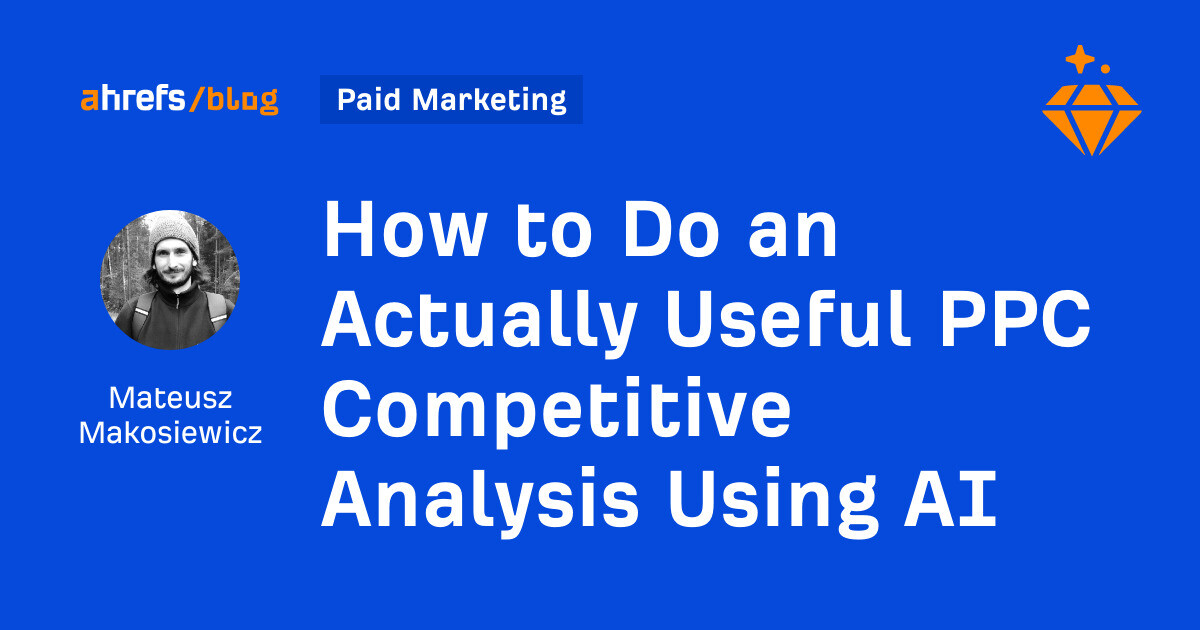
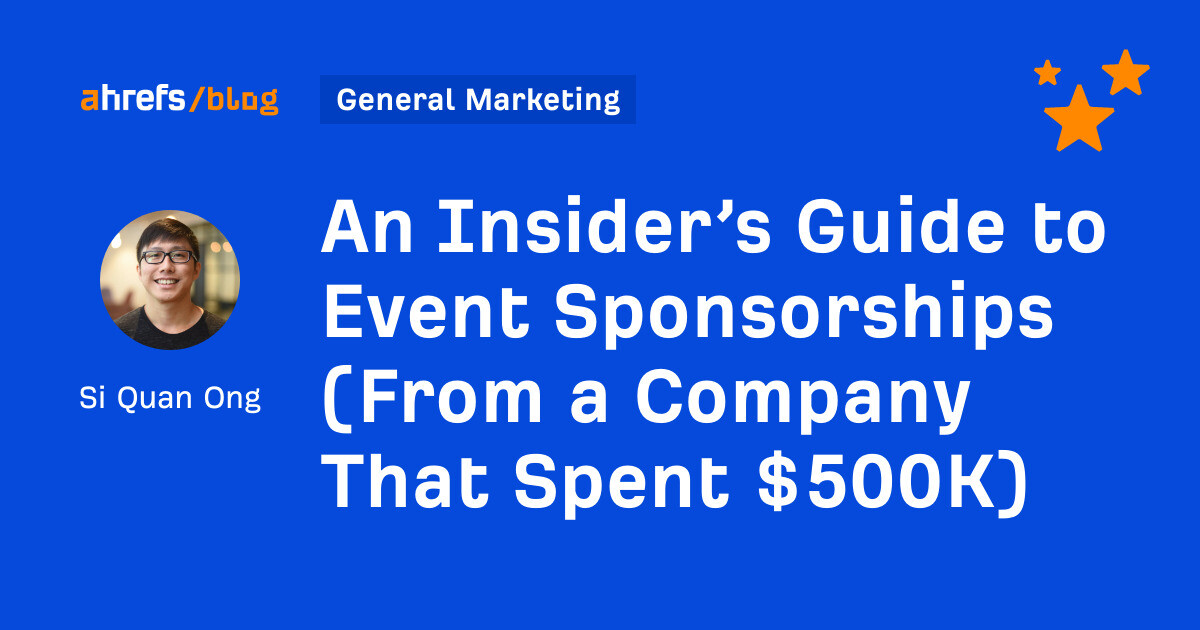
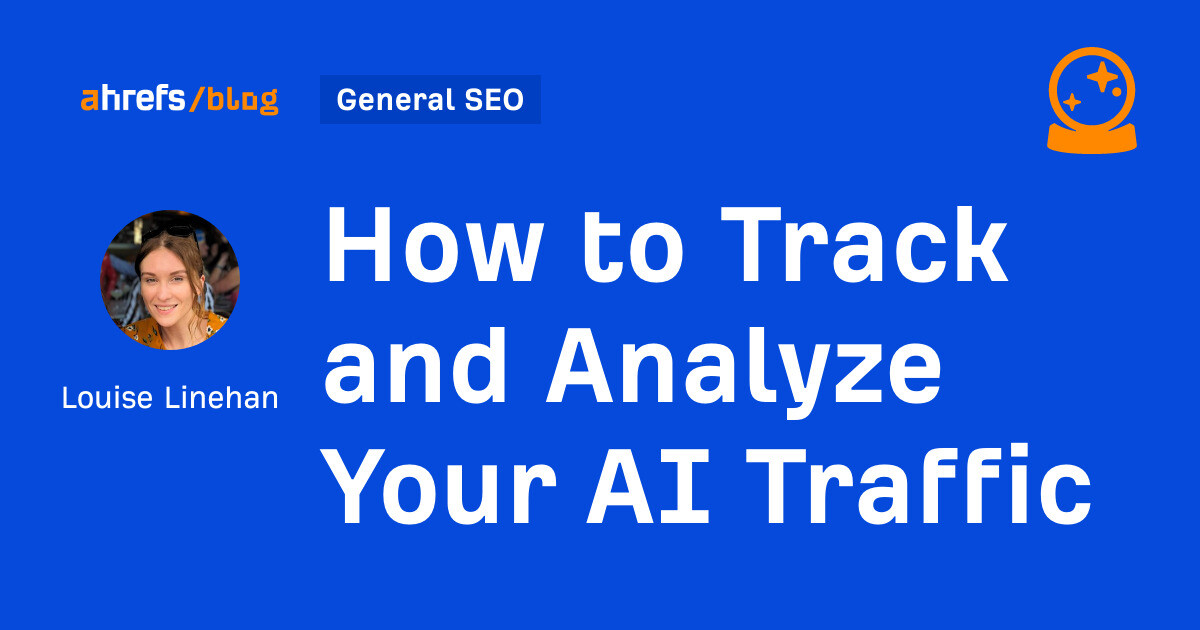





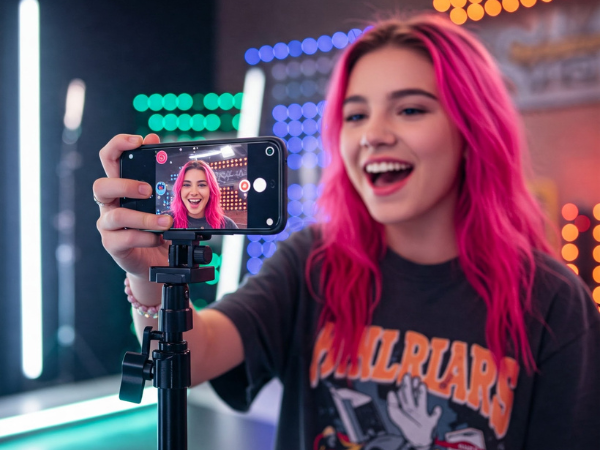
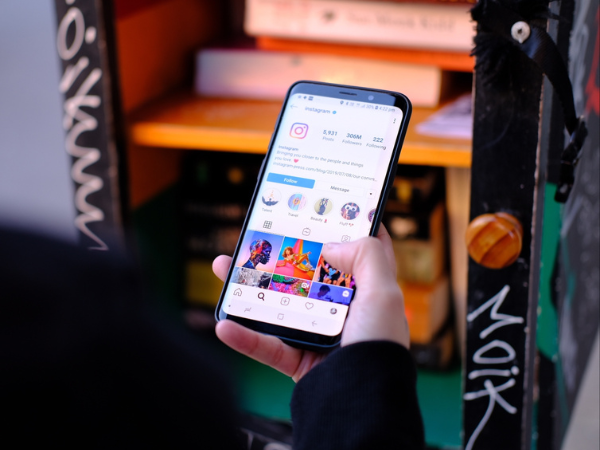





![Social media image sizes for all networks [May 2025]](https://blog.hootsuite.com/wp-content/uploads/2023/01/Social-Media-Image-Sizes-2023.png)
















